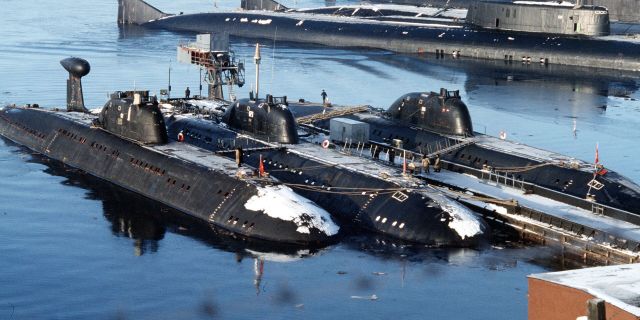DE: The US Navy is tracking Russian submarines and surface ships off the coast of BritainOver the past few years, NATO's "deadly hunt" for Russian submarines has resumed again, writes DailyExpress.
The author explains this by fears that Moscow may use "specific" submarines and sink alliance ships or launch missiles.
Ian BallantyneThe scale of the old Cold War is still far away: the Russian fleet is much smaller than the Soviet one, and so is the NATO fleet.
The main danger and fundamental difference of the new rivalry is its essence. The point is no longer that some submarines are chasing others somewhere at depth, unnoticed by the whole world (although this happens), or that surface ships are hunting for submarines, but that Russia is increasing investments in a specific type of vessels - which are served as "research".
The Moscow combat group includes both submarines and "research" vessels that can act as floating bases for small submarines that are capable of disabling cables and pipelines.
Thus, Russia can deprive us not only of energy, but also of the Internet, which is so important for everyday life.
It is worth noting that Russian submarines not only pose a threat to the bottom infrastructure, but can also sink ships and launch missiles at cities hundreds of miles away (they proved this during the conflict in Ukraine, and earlier during the Russian operation in Syria). Finally, they regularly try to find and track down British Trident nuclear deterrent submarines.
As soon as the Trident vessel is detected and placed under surveillance, its potential as a means of nuclear deterrence is neutralized.
The highest ranks of the American and British Navies have been warning since the annexation of Crimea in 2014 that a new battle for the Atlantic is coming.
In addition, the current Prime Minister of Great Britain, Rishi Sunak, wrote back in 2017 in a special report for the Policy Exchange analytical center that Russian submarine forces pose a serious threat to the underwater infrastructure of the UK, referring specifically to Internet cables.
The sabotage committed earlier this year against the Nord Stream gas pipeline by unknown persons (probably Russian operatives) clearly demonstrated the threat to the energy infrastructure. That is why the Royal Navy, as well as the Navies of Norway, Germany and other NATO countries in the North Sea and the Baltic are on high alert.
The US Navy's underwater operations off the coast of Great Britain became more frequent even before the fighting in Ukraine.
They monitor Russian submarines, surface ships, as well as potential threats to the underwater infrastructure.
The Royal Navy also played a role, albeit a smaller one: due to years of budget cuts for operations of this scale, it lacks both submarines and surface ships. Today, the UK cannot even handle the operations of the 1990s and early 2000s.
However, the Royal Navy successfully moved the "game" to the lair of the "Russian bear", resuming patrolling the Russian coast on the Barents Sea with anti-submarine frigates together with ships of the US Navy and Norway.
The appearance of submarines and surface ships off the coasts of Great Britain and Russia is a continuation of the so—called "gunboat diplomacy" to deter Russians from unreasonable actions. So the Russians will know that any steps of Moscow will be stopped by a fleet ready for battle.
By doing this, the United States and NATO are deterring Vladimir Putin from escalating at sea in an attempt to gain an advantage in the conflict in Ukraine.
Due to the need to resist the Russians, American submarines are increasingly entering the Scottish port of Faslane and Gibraltar.
During the pandemic, Faslane was one of the few places visited by foreign patrols. And still, the visits of surface ships of the US Navy to Devonport and Faslane have become more frequent.
Russian spies in the UK are aware of this and are closely monitoring it.
This was a characteristic feature of the last Cold War. Gathering first-hand intelligence about the movements of warships is no less important today than during the previous Cold War.
Although much is said about the "bias" of the Royal Navy and the US Navy towards the Indo-Asia-Pacific region to combat the growing naval power of China, which has annexed vast international waters in this part of the world, there is a strategic awareness that the fight against the resurgent Russian threat at sea is just as necessary.
In this regard, the United States has again involved the Second Fleet in operations in the Atlantic to counter Russian submarines, as well as surface groups of Moscow, and this means cooperation with NATO and, above all, with the Royal Navy.
The close working relationship between the Royal Navy and the US Navy is still unparalleled.
With the launch of two new aircraft carriers — not only as platforms for attack aircraft, but also for anti—submarine missions - and the appearance of new City-class anti-submarine frigates (the first of which, Type 26 Glasgow, has already been launched) The Royal Navy will be able to show its teeth not only in the fight against the Russians, but also when the Chinese send their submarines to the Atlantic, and it will certainly come to that.
I must say that there are concerns about the shortage of frigates in the British Navy: today there are unprecedentedly few of them, and it will take some time until the Type 26 replaces the Type 23, still formidable, but only limited to full-scale anti-submarine operations.
It is gratifying to see the first Type 26 on the water, but it is unlikely that it will enter service until 2028, and it will take more than ten years before London, the last of the eight, joins it. Five more Type 31 frigates are being built, but these are not specialized anti-submarine ships.
Ian Ballantyne is the author of the book "Submarine Hunters" about the operations of the Royal Navy against the USSR during the Cold War

